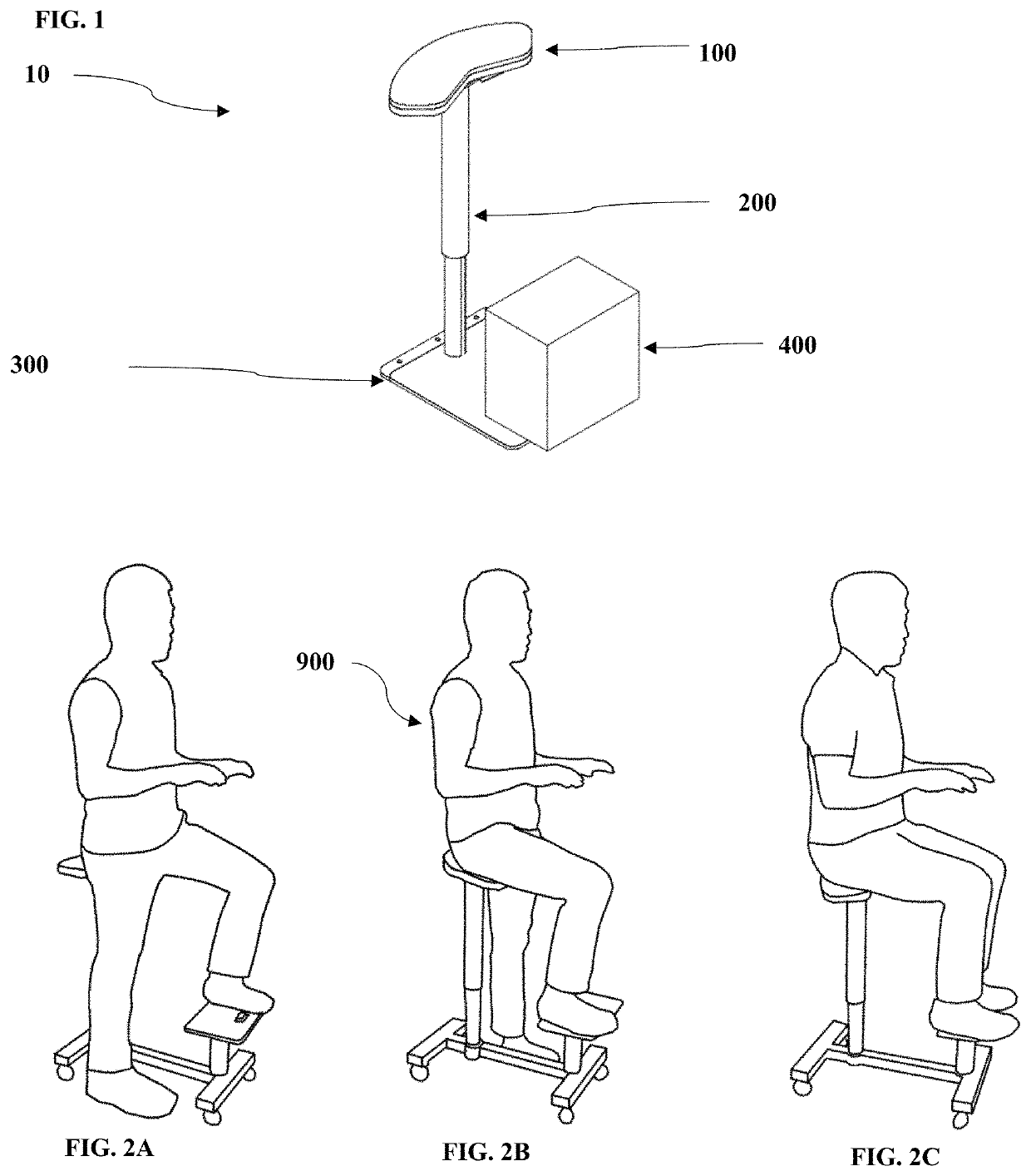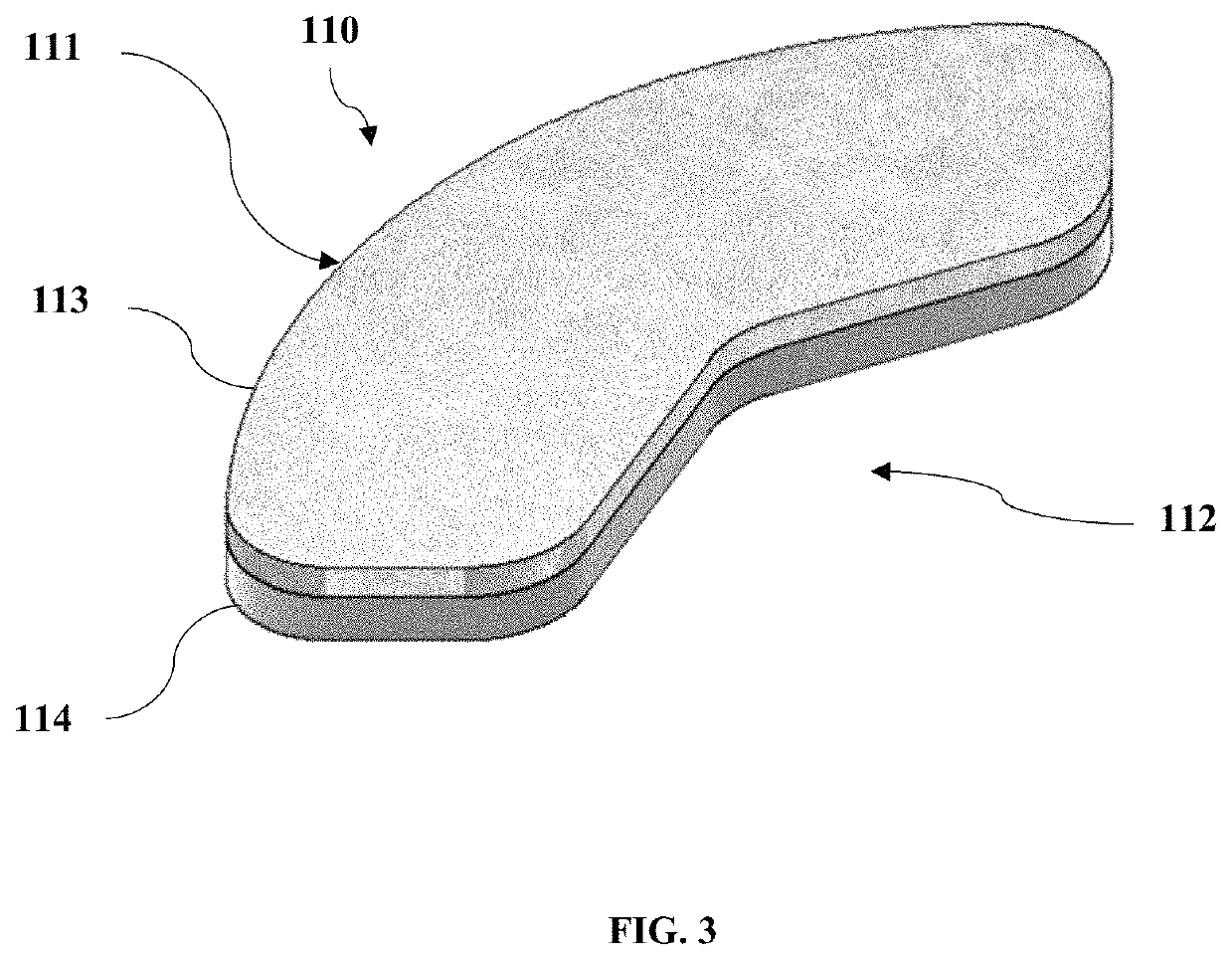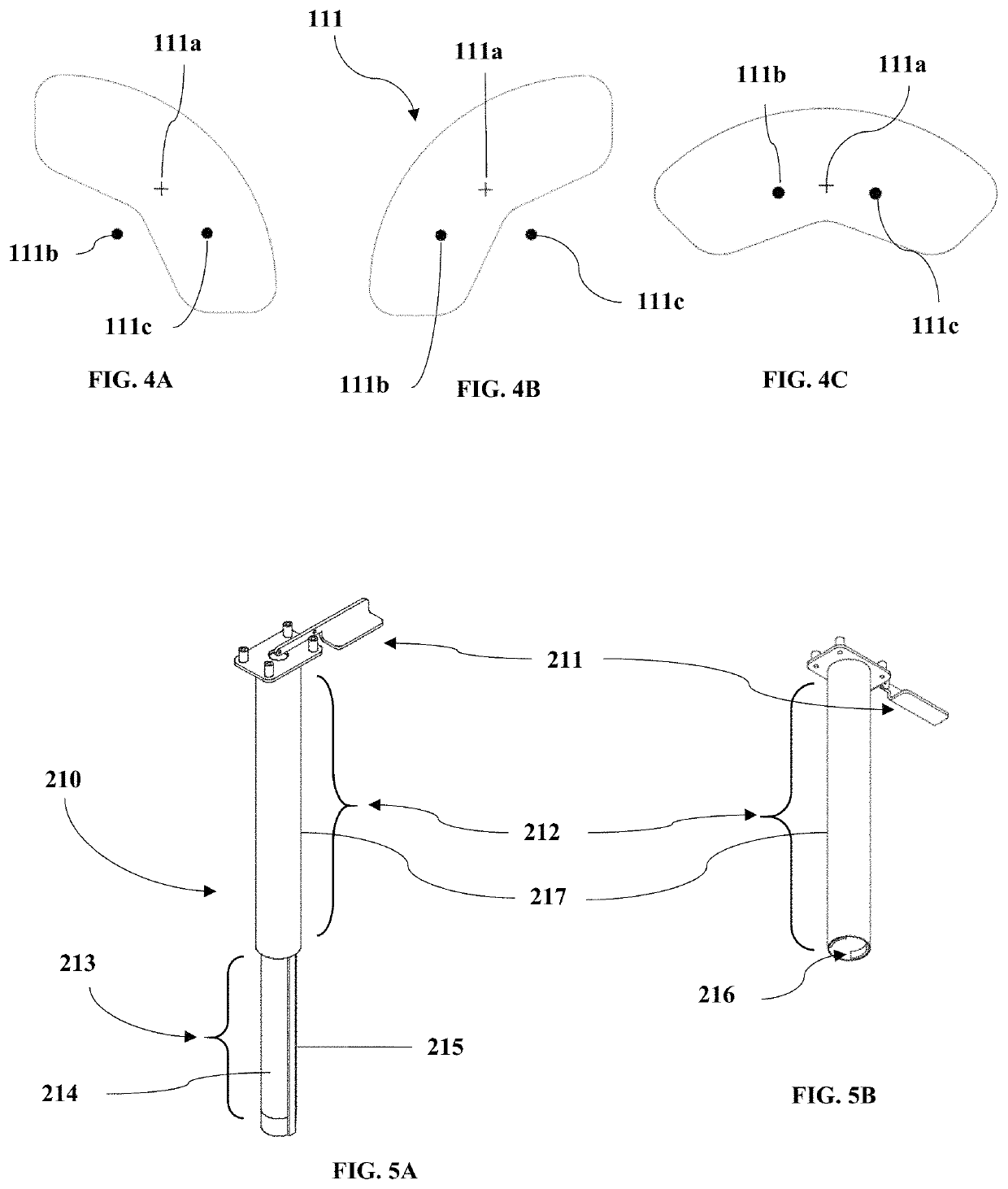Half-sitting stool with supported sit bone
a half-sitting stool and supported technology, applied in the field of sitting devices, standing devices, leaning devices and body support devices, can solve the problems of low back pain, shear stress between vertebrae, and people sensitive to such stress, and achieve the effect of promoting good postur
- Summary
- Abstract
- Description
- Claims
- Application Information
AI Technical Summary
Benefits of technology
Problems solved by technology
Method used
Image
Examples
embodiment 110
[0048]FIG. 3 is an isometric view of the seat platform of the half-sitting stool of FIG. 1, consistent with embodiments of the present disclosure. FIG. 3 shows an embodiment 110 of seat portion 100 comprising a seat platform 111 and a cutout 112. Seat platform 111 vertically supports the user beneath one, the other, both, or neither of the user's ischial tuberosities (i.e., “sit bones”, left ischial tuberosity, right ischial tuberosity, etc.). Cutout 112 is an empty space (i.e., a void, an opening, etc.) of seat portion 110 that permits extension of one of the user's legs on the unsupported side downward through cutout 112. The seat platform 111 includes a seat base 114 that provides structural support to seat portion 110 and a seat cushion 113 that distributes pressure applied to the user's buttocks and thereby provides comfort.
[0049]The seat platform can have various shapes (when viewed from the top) to accommodate different sizes of people (e.g., a smaller size for smaller adults...
embodiment 210
[0053]FIGS. 5A-5B are isometric views of a stem portion of the half-sitting stool of FIG. 1, consistent with embodiments of the present disclosure. FIGS. 5A and 5B show an embodiment 210 of stem portion 200 comprising upper column 212 and lower column 213. In this embodiment, upper column 212 and lower column 213 are telescopically movable relative to each other so that the height of seat portion 100, which is attached to one of the two columns, can be adjusted relative to the base portion 300, which is attached to the other column. The columns are cylindrical and concentric. In various other embodiments, the columns may be non-concentric or have non-round cross sections. Alternative embodiments may include a plurality of columns. In other embodiments still, the apparatus implementing height adjustment may consist of linkages rather than telescoping columns. In any case, the resultant adjustability of height is necessary to accommodate people of various inseam lengths and to accommo...
embodiment 310
[0058]Embodiment 310 of base portion 300 (see FIG. 1) includes a standing surface 311, a mount point 312 for stem portion 200, and a mount point 313 for footrest portion 400. In the left-seated and right-seated positions, the user's foot on the unsupported leg rests on standing surface 311, while the user's foot on the supported leg rests on footrest portion 400. In the standing position, both of the user's feet rest on standing surface 311. In the conventionally seated position, the user's feet rest on footrest portion 400. Base portion 310 may be contained in the floor. Base portion 310 may also be the floor itself, in which case stem portion 200 and footrest portion 400 are mounted to the floor.
PUM
 Login to View More
Login to View More Abstract
Description
Claims
Application Information
 Login to View More
Login to View More - R&D
- Intellectual Property
- Life Sciences
- Materials
- Tech Scout
- Unparalleled Data Quality
- Higher Quality Content
- 60% Fewer Hallucinations
Browse by: Latest US Patents, China's latest patents, Technical Efficacy Thesaurus, Application Domain, Technology Topic, Popular Technical Reports.
© 2025 PatSnap. All rights reserved.Legal|Privacy policy|Modern Slavery Act Transparency Statement|Sitemap|About US| Contact US: help@patsnap.com



